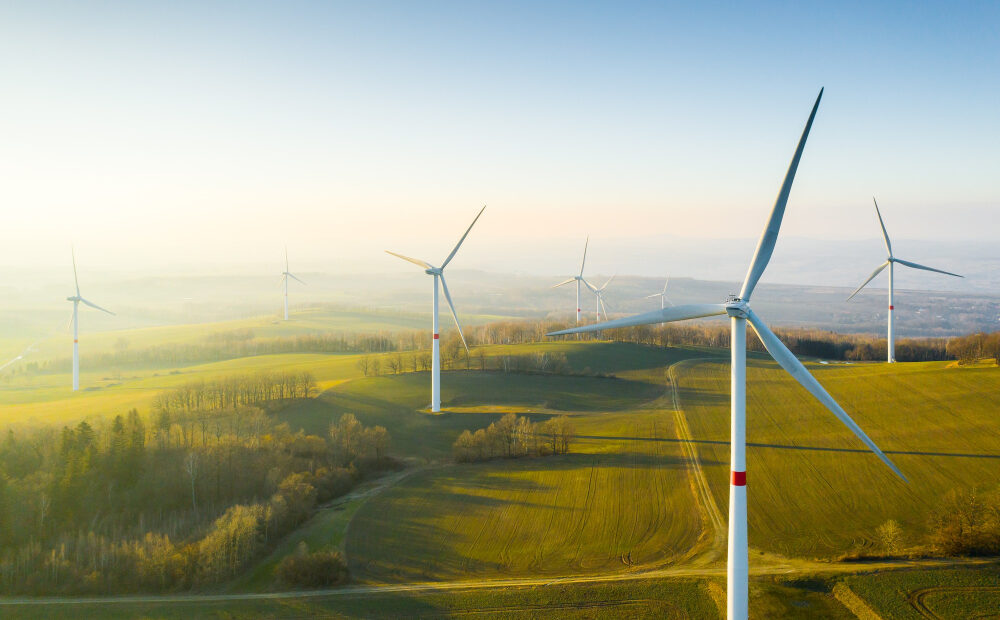A new report, conducted by Wind Energy Ireland, found that wind farms played a pivotal role in Ireland’s energy landscape in 2023. The report reveals that wind farms not only supplied 35% of the country’s electricity but also set a new record for the amount of power they produced.
According to Wind Energy Ireland’s annual report, Irish wind farms reduced gas expenditure by almost €1.3 billion in 2023. The fossil fuel sector lost about €1 billion last year, with an extra €300 million saved on carbon credits, as wind farms delivered 35% of Ireland’s electricity and established a new record for power generation.
These findings come from Wind Energy Ireland’s Annual Report together with new analysis published by energy specialists Baringa entitled: Cutting Carbon, Cutting Bills: Analysis of savings in gas consumption delivered by wind farms in 2023.
According to the Baringa research, without wind energy, Ireland would have had to pay an additional €918 million on gas, for power generation in 2023, the majority of which would have been imported, as well as an additional €358 million for carbon credits to burn that gas. A further €279 million (£240 million) was saved in Northern Ireland.
It is estimated that Irish wind farms saved approximately 4.2 million tonnes of carbon last year, which is roughly equivalent to the amount of carbon produced by 1.9 million cars. The overall amount saved on gas was roughly €1.3 billion, down from €2 billion in 2022, due to substantially reduced wholesale gas prices over the past year.
Commenting on the findings, Noel Cunniffe, CEO of Wind Energy Ireland, said: “Electricity generated from Irish wind farms replaces imported fossil fuels. The more wind we can get on the electricity grid, the less we rely on imported gas and the more we can cut our carbon emissions and keep that money at home,”
“Our members can be proud of the role Irish wind farms are playing in supporting Irish electricity consumers and reducing our carbon emissions. It is a true success story, and we are on the way to an energy independent future for Ireland,” he added.
However, he cautioned that the wind farms that are needed to achieve energy independence cannot be built and power cannot be delivered to where it is needed without a planning system that is fit for purpose and without support for EirGrid and ESB Networks to develop a much stronger electricity grid.
“Progress to date on the Planning and Development Bill has been welcomed by industry and the Government’s plan to put in place mandatory timelines for planning decisions as part of the new legislation needs to be fully supported. Both planning reform and grid reinforcement must remain top priorities right across the political system in 2024,” he said.
2023 was wind’s best year on record, according to Wind Energy Ireland wind farms provided a record-breaking 13,725 gigawatt-hours (GWh).
This result reflects the highest yearly quantity of wind power generated by our wind farms to date, equivalent to the electricity consumption of more than 3 million Irish homes, and exceeds the previous record of 13,699 GWh achieved in 2020. It comes after last month’s impressive performance, when wind energy supplied precisely half of the country’s electricity, making it the greatest month for wind power generation in 2023.
There’s further good news for consumers, as the average wholesale price of electricity in December 2023 was €88.97 per megawatt-hour (MWh), down 68% from €276.52 in December 2022. This increases the chance that these savings may be passed on to consumers in the coming months.
Noel Cunniffe said, “We know that consumers and businesses are struggling every day with high energy bills. They need their electricity to be affordable as well as clean,”
“The continued annual fall in wholesale electricity prices is welcome news. We are gradually starting to see these price reductions being passed onto consumers in their energy bills and we hope to see this continue in 2024.
“The good news is that if we continue investing in renewables, if Government, industry and communities work closely together, we can and will do even more to bring energy bills under control and make Ireland energy independent,” he concluded.













